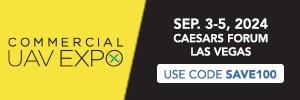Hi,
Just signed up to get some info and become part of this community.
I'm a licensed pilot in Northern California, and thought I'd explore the commercial side of drone ops as a side gig.
I've done a bunch of searches and research and it looks like I need to get a "remote pilot airman certificate". I believe that can be an add-on to my FAA license, which looks like its just filling out some forms on the FAA website and having a CFI sign-off. Am I missing anything there?
Job wise, how is the market now for independent operators? What types of jobs are you finding to be the most common and worthwhile?
Equipment - I've heard the Inspire is the one to get for anything professional. If cost weren't an issue, whats the aircraft/camera package to get? If cost were an issue, what's the runner up?
I appreciate the responses, and am looking forward to a fun venture!
PS anyone in the Sacramento area? Would love to meet up.
Just signed up to get some info and become part of this community.
I'm a licensed pilot in Northern California, and thought I'd explore the commercial side of drone ops as a side gig.
I've done a bunch of searches and research and it looks like I need to get a "remote pilot airman certificate". I believe that can be an add-on to my FAA license, which looks like its just filling out some forms on the FAA website and having a CFI sign-off. Am I missing anything there?
Job wise, how is the market now for independent operators? What types of jobs are you finding to be the most common and worthwhile?
Equipment - I've heard the Inspire is the one to get for anything professional. If cost weren't an issue, whats the aircraft/camera package to get? If cost were an issue, what's the runner up?
I appreciate the responses, and am looking forward to a fun venture!
PS anyone in the Sacramento area? Would love to meet up.








